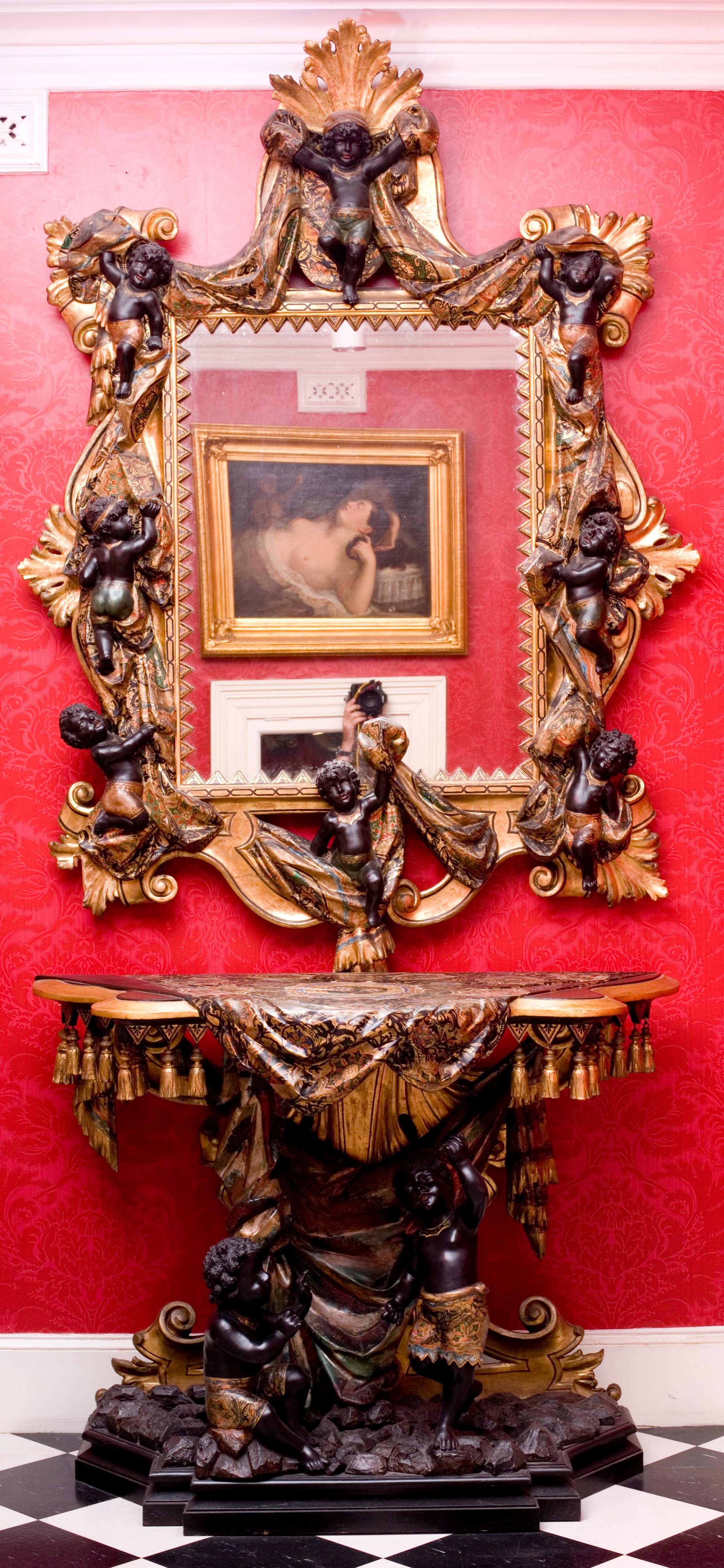Blackamoor Suite

Blackamoor Suite
By Wendy Babiolakis
Love them or hate them we cannot fail to have noticed that within the Collection we have some impressive pieces incorporating blackamoor figures designed in the Baroque manner.
The Venetian tradition which produced this kind of elaborate furniture began in the mid 17th century, with the desire for furniture of this type enjoying a renaissance in the late 19th century, reflecting the widespread desire for opulence.
These pieces consist of a mirror, en suite console table, both utilising blackamoor figures in the form of putti. There is high decoration with simulated foliage, draped and tasseled material and rocks or coals at the base. The wood used is pine with gesso plaster, and a polychromed and gilded surface in a trompe l’oeil style. Initial testing of paints used puts the date of manufacture after 1824, and it is regarded as Venetian in design with flamboyant Moorish influences. One can make all sorts of assumptions about the symbolism of the pieces. One suggestion is that it is representative of heaven and hell - the upper-most figure being in the style of Christ as the putto appears in the Crucifix position, the lower putti in the manner of attendant angels, with the console top representing the earth, and the figures beneath dancing on hot coals representing Hades. Or it could be merely a fantasy, a miscellany of images from the Baroque period.
The fascination with blackamoors can be traced back to Europeans’ first encounter with people of colour. The movement of North Africans into Spain and Portugal and the beginnings of the slave trade created an interest in such ‘exotic’ people and on a rudimentary level, it became very fashionable to have a ‘blackamoor’ page boy or personal servant, a perfect foil for the pale skinned beauty of the women.
The other two pieces in the Collection are of a Nubian woman and man who are represented in decorative sculpture as virtual servants, designed to hold shells/trays. Full body depictions take many forms, always useful, often seen holding bronze candle sconces, incorporated into small stands, tables, or gueridons (named after a black vaudeville actor popular in Paris in the mid 17th century). Significant sculptors of religious figures and blackamoors were Venetians Andrea Brustalon (1662–1732) and Giacomo Piazzetta (1640-1705) – father of the famous Venetian painter Giovanni Battista Piazzetta.
This article was originally published in Fairhall, Issue 7, November 2012, pp 15.
Journals
About US
Explore
Contact
VISIT
See our VISIT page for hours and directions
BY PHONE
+61 3 9416 2515
BY POST
PO Box 79, East Melbourne VIC 8002
ONLINE
General enquiries
Membership enquiries
Shop
Donation enquiries
Subscribe to E-Newsletter



